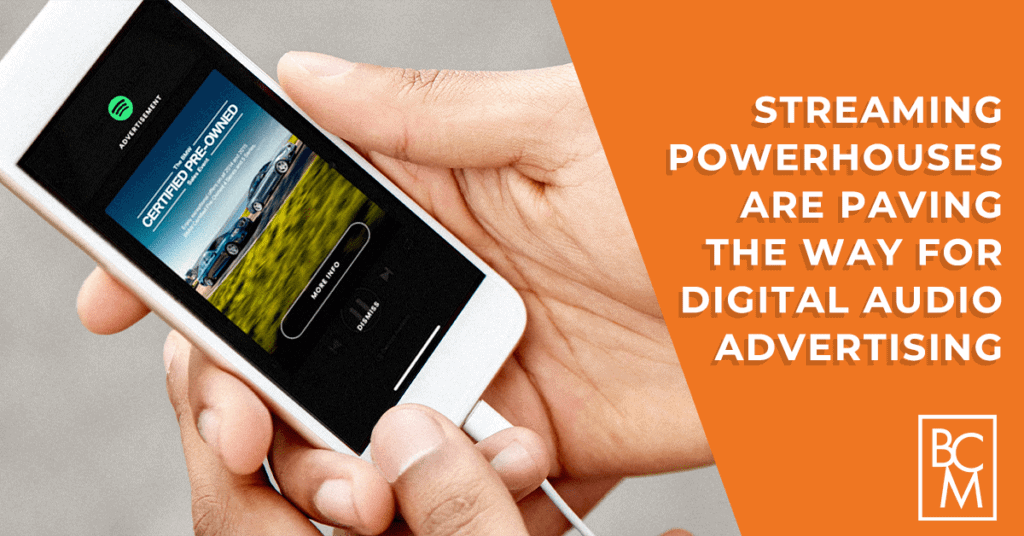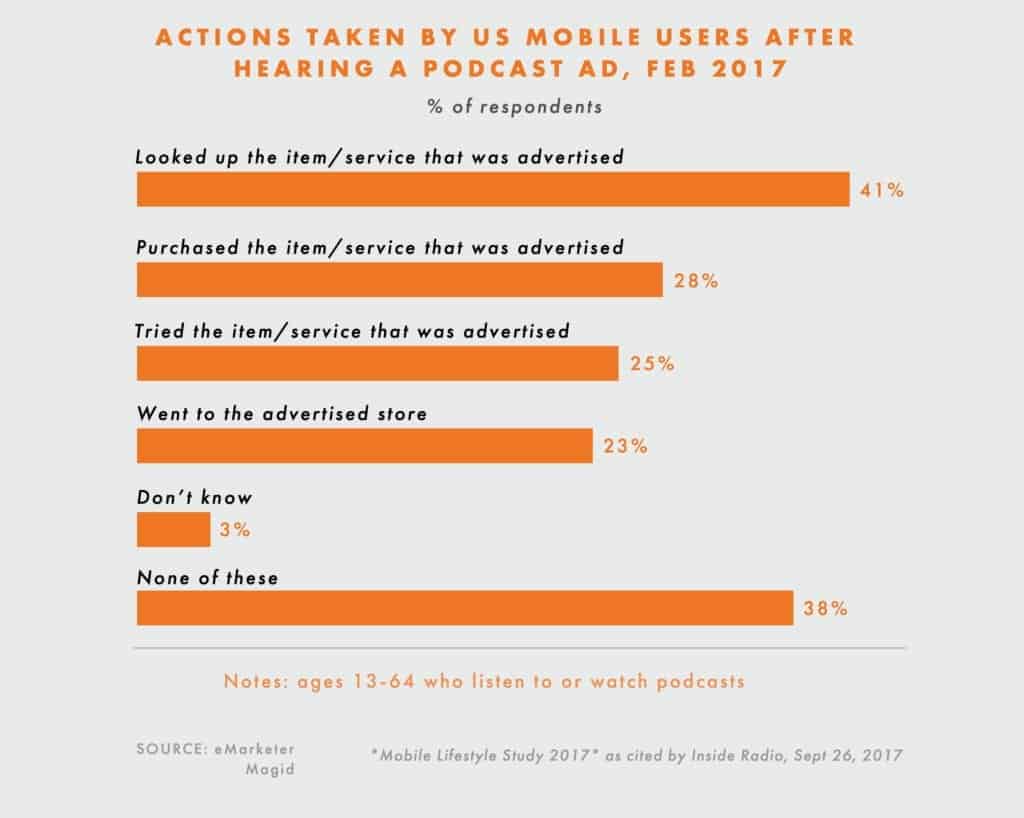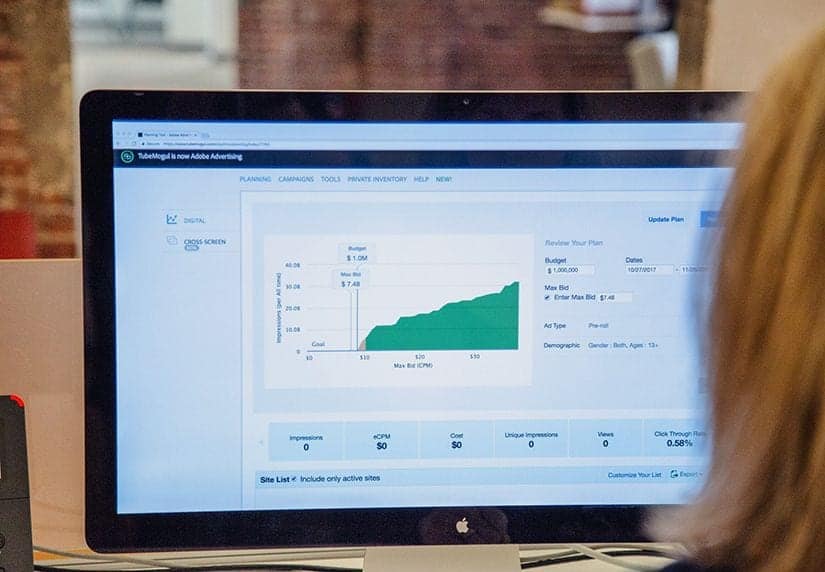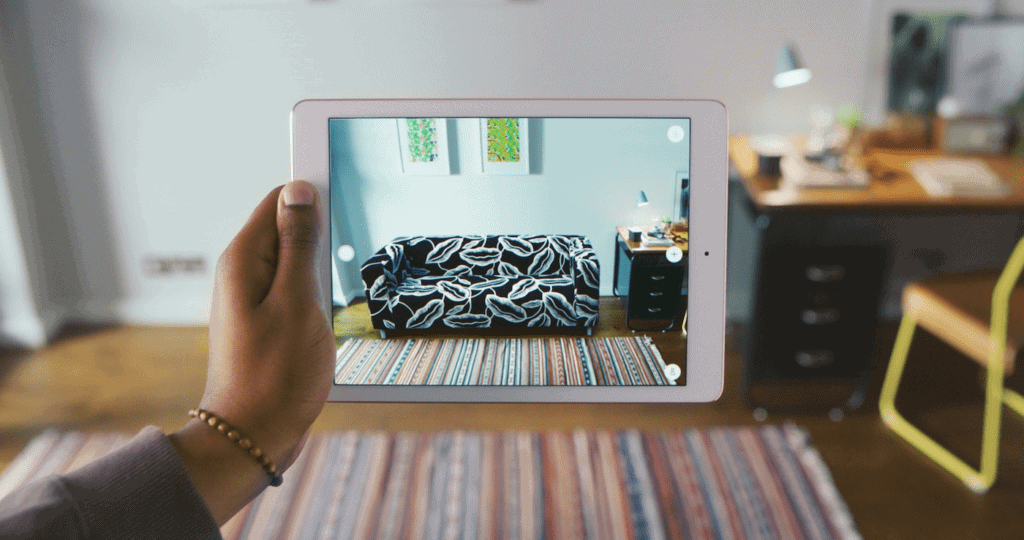Audio Advertising: The Not-so-Sleeping Giant
“In 10 years from now, I doubt that anyone under 50 will be watching linear TV.” These stirring words come from Rene Rechtman, president of...
3 min read
Dan Potts : Aug 7, 2019

The radio is not what it once was. Dating back to 2000, when Pandora Media first emerged as Savage Beast Technologies,the radio-sphere was revolutionized with its take on personalized music streaming. Today, in the competitive climate of streaming app powerhouses like Spotify and Apple Music, the audio industry continues to evolve as it becomes increasingly more data-focused. For advertisers, this offers growing opportunities to connect with audiences in a highly-targeted and personal way.
Compared to social platforms like Facebook or Instagram, recent data has shown that audio streaming services, especially podcasts, have been proven to establish a much more intimate and authentic connection with their audiences compared to the likes of their social counterparts. As a result, these audiences are growing at a rapid rate. In fact, according to Edison Research, there are more people tuning in for podcasts than ever before, with approximately 73 million people per month (More on this here!) Consequently, the industry revenue is continuing to grow exponentially, with a projection of $479 million by the close of the year.
With this growth in audience and revenue, we are seeing rapid development on the technology front, as the accumulation of user data leads to increasingly more accurate targeting and reporting tools. One example of this includes the launch of Spotify’s self-serving platform, Spotify Ad Studio, geared towards small and medium-sized businesses looking to expand exposure of their ads across channels. With this offering, advertisers can upload up to 30-seconds of pre-produced ads or drafted scripts and have Spotify create ads with background music and voice-over, in addition to a custom image that can be displayed with the audio.
More importantly, advertisers can use this technology to target users based on age, gender, and listening preferences through Spotify’s inventory of user log-in data. For example, a local coffee shop can identify individuals who are listening to their “Acoustic Chill” playlist on the platform and target them with ads encouraging them to take a break and grab a cup of their coffee. As this progression of data-driven technology continues to grow, advertisers are consistently met with the irrefutable notion: more data, more possibilities.
Thanks to the precision that results from this data, businesses are reporting success with their ads across the board. Starting with Spotify, who claims that its ads are driving 60% greater recall than a benchmark of more than 1,600 online campaigns. Similarly, the Interactive Advertising Bureau (IAB) and Edison Research claim that audiences are more likely to take action when hearing an ad during their favorite podcasts than not – with 45% visiting a website afterward, 42% considering the new product or service, and 37% at the very minimum gathering information about the product. The supplemental bar graph below further supports these claims – suggesting that, after hearing a podcast ad in particular, listeners aged 13-64 are more likely to, at the very least, look up the product or service that was advertised. Considering this, it is clear why podcast listeners have recently been referred to as the “ambassadors for the medium [that is digital audio,]” pioneering the trend for audio audiences as a whole.

Aside from the larger-named streaming services discussed above, there are many brands and smaller companies across industries that have already taken the leap into audio advertising. For example,Panoply Media;has notably partnered with companies such as Umpqua Bank and Netflix to promote each company’s respective services using their Panoply Custom tool. Essentially, Panoply creates podcast content for businesses. With Panoply, a company specializing in creating podcast content for businesses, clients can work closely with an award-winning team of strategic storytellers to develop ideas for podcast episodes that will help these businesses execute their objectives. For Umpqua Bank, the goal was to be the first financial institution to create a safe space for honest discussions surrounding one’s savings.
As a result, the podcast Open Account was created, compiling numerous interviews with individuals from all backgrounds to discuss the confusing, stressful nature of money and the questions surrounding it. Similarly, Netflix used Panoply’s services to create its Making a Murderer podcast, which supplemented the original Netflix series by taking listeners behind the scenes with the creators. This podcast in particular did not just meet business objectives, but exceeded them as the podcast quickly rose to the iTunes Top 10.
Considering the advancement that’s recently been made in Digital Audio, perhaps the most exciting point to be made is the fact that there is exponentially more opportunity to be explored. For instance, Spotify has successfully taken the lead in providing its advertisers access to the data surrounding its 70MM+ users, Pandora still maintains more than 73 million monthly users and, as a result, holds the power to challenge even its fiercest competitors.
As leading analysts discussed in this Reuters article, Pandora has the opportunity to stay relevant by introducing a new self-serve ad platform that gives customers more insight into their campaigns, thus providing more opportunity for advertisers. In fact, Senior VP of Pandora’s Revenue Operations, Chris Record, has confirmed that such a platform is “definitely part of our plan,” as they are allegedly looking to buy an advertising technology within the next two months. This confirmation is just a taste of the opportunity that is left to be tapped into in the coming future, and perhaps the most enticing point for jumping into the audio pool now!
Looking to learn more about digital audio advertising or expand your advertising efforts? Contact BCM today!

“In 10 years from now, I doubt that anyone under 50 will be watching linear TV.” These stirring words come from Rene Rechtman, president of...

What is Augmented Realty? Whereas Virtual Reality (VR) gives users a 100% digitally immersive experience, Augmented Reality (AR) is technology that...